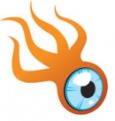
Plagiarism is a seriously hot topic in education right now - we need to lead by example - and that means understanding the murky world of copyright a little more clearly!
CREATIVE COMMONS? OPEN SOURCE? PUBLIC DOMAIN? COPYRIGHT? COPYLEFT?
![]() Creative Commons: Creative Commons (CC) is a non-profit organisation which facilitates more flexible copyright usage for the internet. Anyone can release their work under Creative Commons, with differing levels of restriction. There is a chart explaining the different licenses at the bottom of this section.
Creative Commons: Creative Commons (CC) is a non-profit organisation which facilitates more flexible copyright usage for the internet. Anyone can release their work under Creative Commons, with differing levels of restriction. There is a chart explaining the different licenses at the bottom of this section.
![]() Open Source: Put simply, programming code that can be read, viewed, modified, and distributed, by anyone who desires. Moodle, OpenOffice & Gimp are examples of open source software programs. (see block on right for nifty download links)
Open Source: Put simply, programming code that can be read, viewed, modified, and distributed, by anyone who desires. Moodle, OpenOffice & Gimp are examples of open source software programs. (see block on right for nifty download links)
![]() Public Domain: Non-copyrighted material which may be used without violating copyright restrictions. Also refers to things like Books and Film which become public domain after their copyright expires.
Public Domain: Non-copyrighted material which may be used without violating copyright restrictions. Also refers to things like Books and Film which become public domain after their copyright expires.
![]() Copyleft: Not a joke, it's the opposite of Copyright and therefore applies to open source/public domain music.
Copyleft: Not a joke, it's the opposite of Copyright and therefore applies to open source/public domain music.
This chart, explaining the different icons used in creative commons licensing, comes from squidoo.com (link on the right)

(Advice from CreativeCommons.org)
When reusing a CC-licensed work, either as pure sharing or as a derivative work, it is your legal obligation to include what license is being used, as well as obeying by the license conditions provided by the licensor (content owner/creator). From our FAQ:
If you are using a work licensed under one of our six core licenses, then unless the licensor has said otherwise the proper way of providing credit when you are making a verbatim use is: (1) to keep intact any copyright notices for the Work; (2) credit the author, licensor and/or other parties (such as a wiki or journal) in the manner they specify; (3) the title of the Work; and (4) the URL for the work if provided.
- Example: This work, "My Awesome Photo," is copyright (c) 2009 Greg Grossmeier and made available under a Creative Commons Attribution-ShareAlike license: http://creativecommons.org/licenses/by-sa/3.0/

